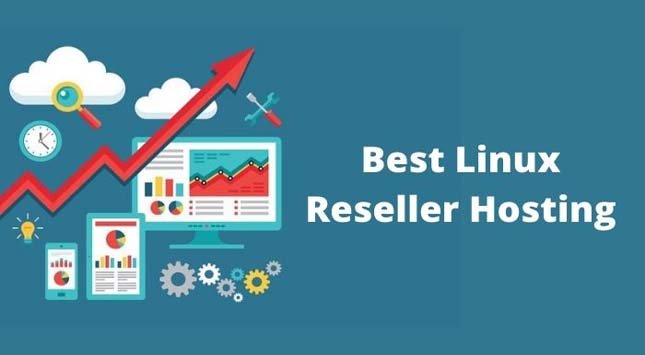It is thus important for organizations that are desperate to take advantage of the Salesforce CRM to transfer their data into the application.
Salesforce is one of the world’s most popular CRM platforms, continuously improving its capabilities and tools for working with the data accumulated in it. This guide will show you how to perform a migration efficiently, from the pre-migration stage up to post-migration.
1. Preparing for Data Migration
Here, planning for the migration effectively will help to minimize some incidences that may cause a lot of trouble during the migration.
- Define Objectives: It is here that you want to clearly define what you want to achieve when migrating your data. Is your organization adopting Salesforce as a single CRM system, or is it replacing several systems with salesforce CRM? By gaining proficiency in the scope, it is possible to identify the resources and instrumentality needed in the process.
- Data Cleanup: It is recommended that you clean up your data to eliminate cases of duplication, irrelevance and data inconsistencies. This will guarantee that only good data is transferred to the new CRM system, hence increasing the efficiency of both systems.
- Stakeholder Involvement: Incorporate individuals from IT, sales and management at the initiation phase. They make sure that the migration of data meets the organizational requirement.
- Set a Timeline: Depending on the organization and projects requirements set the practical and realistic time frame to be allocated for each phase of migration including data extraction, testing, project deployment etc. A proper plan has prediction measures that avoid delays, people and creates general accountability for deadline accomplishment.
2. Choosing the Right Data Migration Method
Salesforce has several tools and choices available for data migration. Your choice will depend on the amount of data, as well as the amount of analysis you want to perform.
- Data Loader: The Salesforce Data Loader is particularly useful for large volume transfers. Common use includes updating or deletion of a large number of records and also import/export of data from or to Salesforce, which is valuable especially for standard Salesforce objects.
- Third-Party Tools: Third-party tools such as Dataloader.io or Kingsway Soft have additional features including Salesforce integration and improved exception management. Some of these tools are effective for more complicated data transfers.
- Custom Development: Generally, the software developed will be completely tailored to the need in question. If you are migrating from some non-standard system, possibly, you are going to utilize Salesforce’s API or Apex to create special workflows.
Also Read: Why GA4 is the Next Generation of Google Analytics You Should Embrace?
3. Data Validation and Testing
Many businesses overlook the importance of testing when migrating their data to a new CRM or CRM instance; therefore, testing becomes paramount in checking the fitness of the new Salesforce instance for use.
- Data Mapping: There you should define how the fields of the source system are related to the Salesforce objects. For instance, you can match map “Customer Name” with the “Account Name” field in Salesforce. good map avoids chances of misplaced data.
- Test Migration: Always perform a trial migration to capture any problems with the new work, especially when a small subset of data is being migrated. Scan for incorrect formatting of data; NULL values or other blanks in essential fields; or just plain mapping errors. This also enables you to ensure that the Salesforce Workflows and other auto launched processes are working as expected.
- User Acceptance Testing is usually done to see the effectiveness of the system which is going to be implemented in a specific organization. Involve them in testing their own product. They will review feedback that will make sure that data collected fulfills the business requirements and that the interface is easily understandable.
4. Executing the Data Migration
However, after the testing phase, then comes what must be the final phase, migration.
- Backup Your Data: This is important to ensure that in case something goes wrong with the migration process you can simply restore your data to its previous state. This precaution is very important so that in case something goes wrong you have the original dataset to work from.
- Data Loading: It will load the data into the proper field in Salesforce using the tool you have chosen. Pay particular attention to the process and look for problems in the system’s error log. Data loader for instance has very rich logging capabilities; utilization of which will alert you of possible issues.
- Post-Migration Validation: The last step after migration is to confirm all tables have been migrated successfully. Search for lost or replicated records and confirm the connection between two Salesforce objects (for instance Accounts and Contacts).
5. Post-Migration Best Practices
Subsequent activities, in which guidelines have to be followed strictly, guarantee good data quality in the long term as well as efficient work of the system.
- Data Integrity Checks: It is recommended to perform constant checks on the migrated data and additionally, to verify its quality. Look for duplication, conflicting data or dead links. There are opportunities, however, such as Data.com or Duplicate Management, to automate this process.
- Training: Offer guidance to your team on how to check things in the new Salesforce environment they had migrated from. This comprises of being fully conversant with the location of data on the site and how to harness the various opportunities of the product.
- Ongoing Monitoring: After that migrate, vigilantly, check bits and pieces of the system that conveyed the work to ascertain that everything is fine. Make use of login screens, and portfolio to monitor and receive feedback on quality of collected data as well as the usage.
6. Common Data Migration Challenges and Solutions
As is well known, no matter how much attention was paid to the data migration process, it always comes with some issues. Here are a few common issues and their solutions:
Data Inconsistencies
Solution: When you transfer massive data from one project to another, always ensure you clean it up to eliminate redundant data or data with formatting issues. Fortunately, there are some data cleansing tools, for instance, Demand Tools, which can help in this.
Mapping Issues
Solution: It is important that you get a good mapping by first verifying your data and then doing the complete migration. It is important to cross check the various field mappings so as to be sure of their relevance from time to time.
Downtime
Solution: It is recommended that the migration process should be done during the least convenient time of the day so that it doesn’t disturb many users. When moving data, especially the large ones, it is advisable to do so in phases such that there is little interruption.
Missing Relationships
Solution: Ensure, for example, that Accounts and Contacts that shortcuts connect also remain. It is important to make sure that key foreign relationships are set up right during the migration process.
7. Summing Up
It is therefore important to properly migrate your salesforce data since it will help you to compile your CRM with the right data. If all the laid down practices are followed before, during, and after the migration process, including choosing the right migration tool, carrying out tests, and monitoring after migration, you will be in a good position to achieve a successful salesforce data migration services that favors your business.
It builds the base for efficient customer relationship management as a well-executed migration lets your business use the best output from the Salesforce. Although it is possible that you come across some complex situations, it is still possible to avoid potential pitfalls and maximize the potential of the Salesforce within your company.
FAQs
Q. Salesforce Data Migration: What Is It?
Salesforce data import is the procedure of transferring data from one system to another Salesforce CRM. The process helps in ensuring that all data that is deemed critical for running the business is effectively transferred to the salesforce for improved manipulation and use.
Q. What criteria should be used to determine the best data migration tool used in Salesforce?
This way, the right tools depend on the complexity of the data. If the migration involves a large number of records, there cannot be a better tool than Salesforce’s Data Loader. For more complicated data integration scenarios, unless clients already possess specialized tools such as Dataloader.io or Kingsway Soft, they are likely to need outside sources. Special attention may need to be paid to a situation where the data does not conform to standard patterns.
Q. Is it possible to enter data into Salesforce without the help of a professional?
Yes, it is achievable if you have the right resource and the right team to work on it. Nevertheless, for multi-object migrations, it is more advisable to seek help from other experts in Salesforce migration to reduce the risks of encountering problematic points and effect a successful migration.
Q. What are the recurring issues that organizations face during Salesforce data migration?
Some of the common challenges include data disparities; mapping problems; system outages among others; unlinked Salesforce objects. Some of these challenges may include, and proper testing, backup and validation can go a long way in solving them.
Q. What measures do I need to take to on data integrity after migration?
Once the migration is done always ensure that the data is continuously checked to ensure it has not been corrupted. This is where working tools such as Salesforce’s Duplicate Management come in; proper verification of the data will reveal any omissions or errors, and constant data checks might help in detection of duplicate entries.
Also Read: EHR Software for Different Types of Doctors






